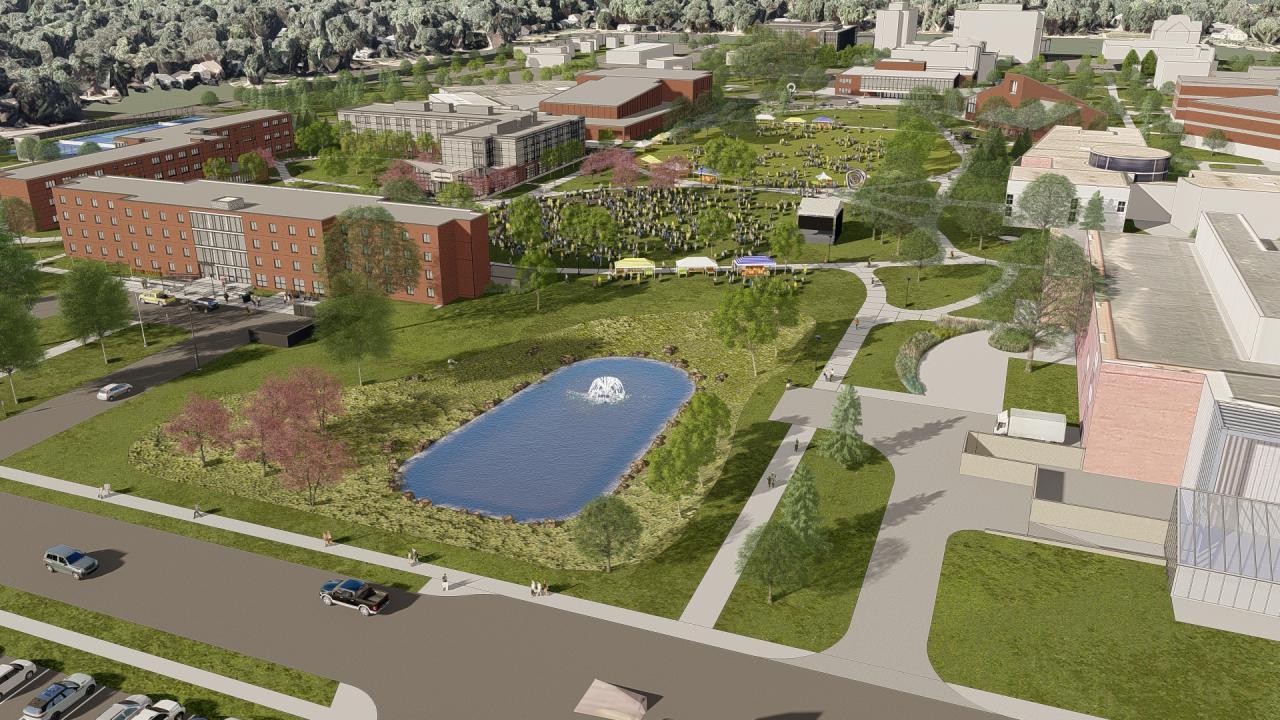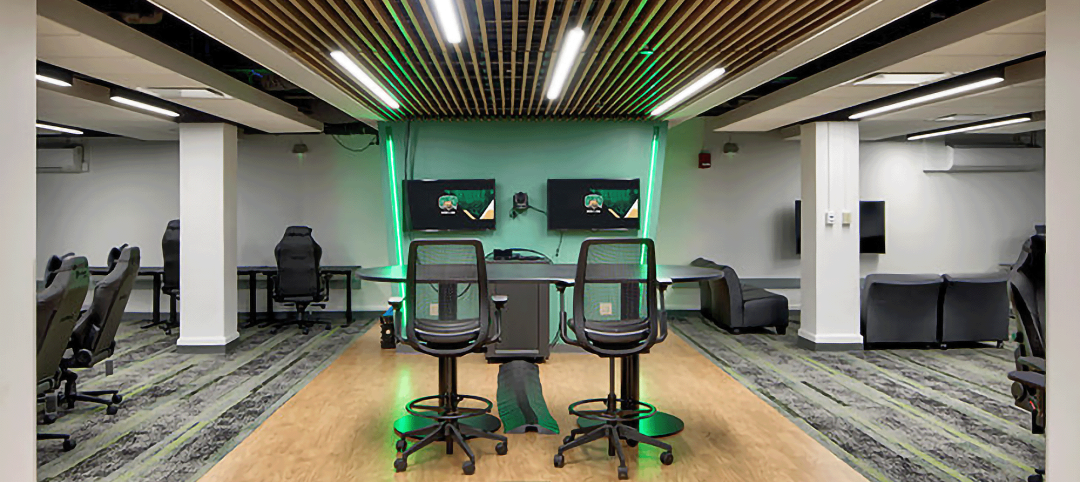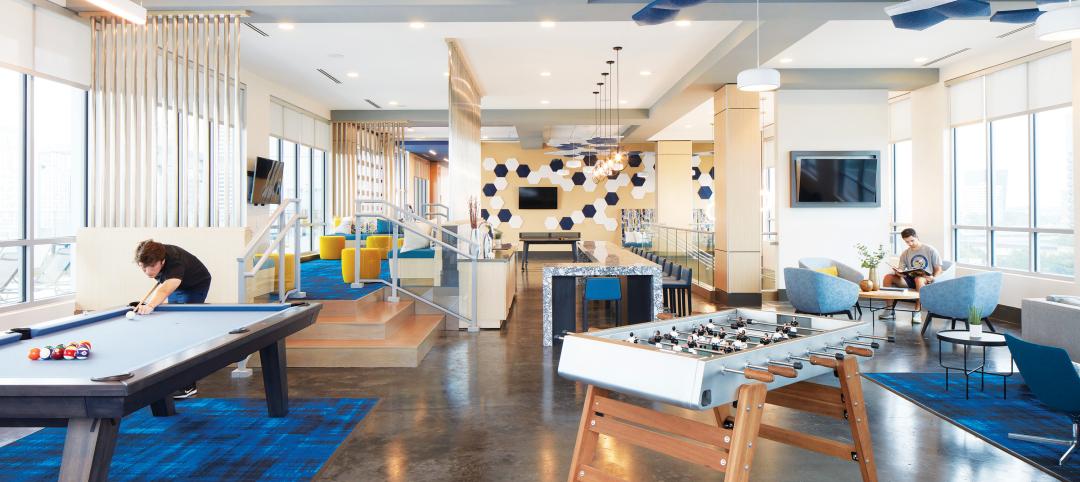Private four-year academic institutions provide more space per in-person student than other sectors. Town and rural schools provide more space per in-person student than urban and suburban schools. Institutions with fewer than 5,000 in-person students offer the most instructional space per in-person student. And small public four-year institutions provide much more research lab space than small private four-year schools.
These are some of the findings in the Society for College and University Planning’s 2022 Campus Facilities Inventory Report. CFI is a national database that helps universities compare their campus development to peer institutions. The quantitative section of the 2022 Report is based on responses from 104 institutions across the U.S. and one in Canada, and its results were released a few weeks ago.
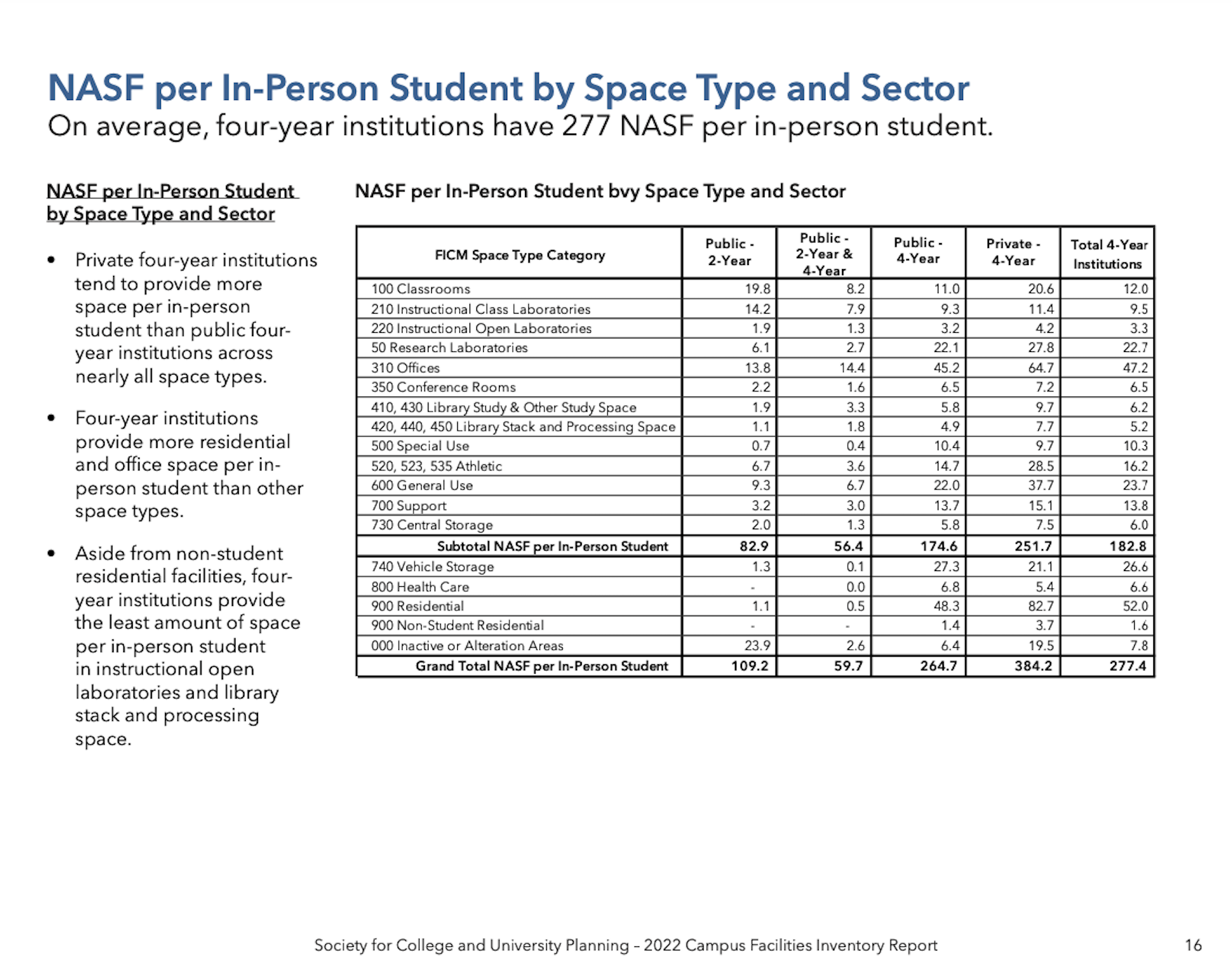
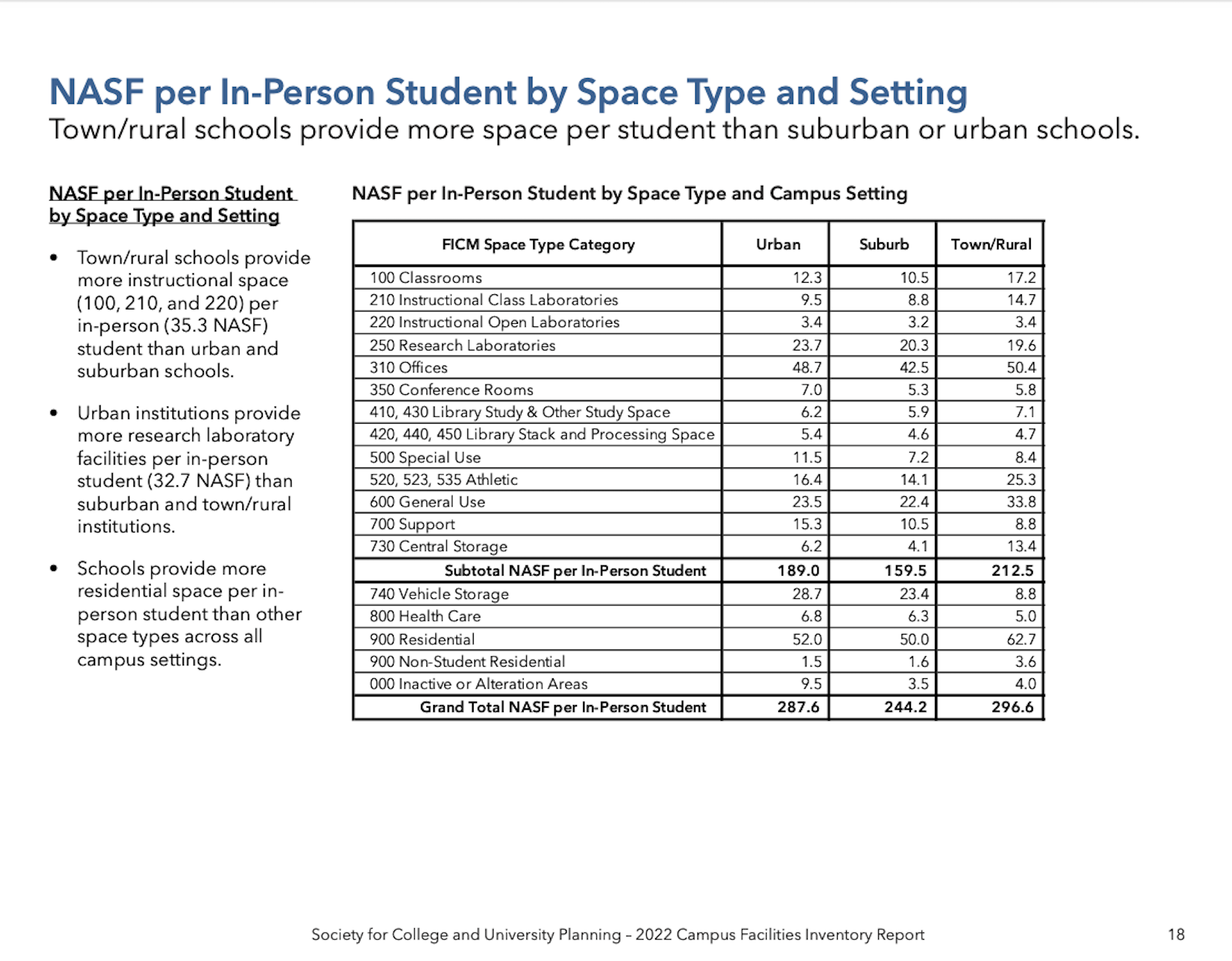
SCUP, a nonprofit professional association that since 1966 has supported college planners, in 2021 partnered with brightspot strategy, a Buro Happold company, to relaunch the Campus Facilities Inventory, (CFI) which originally had been collected and published in 2003-2007. The latest CFI increases the room-use categories tracked to 19, from 15 in the original version. The categories are derived from the National Center for Education Statistics Postsecondary Education Facilities Inventory and Classification Manual.
A sample of the CFI findings shows that small private four-year institutions average 58.7 net aggregate square feet of instructional space per in-person student compared to 35.2 sf that their public counterparts offer.
DEVELOPMENT PLANS GAUGED
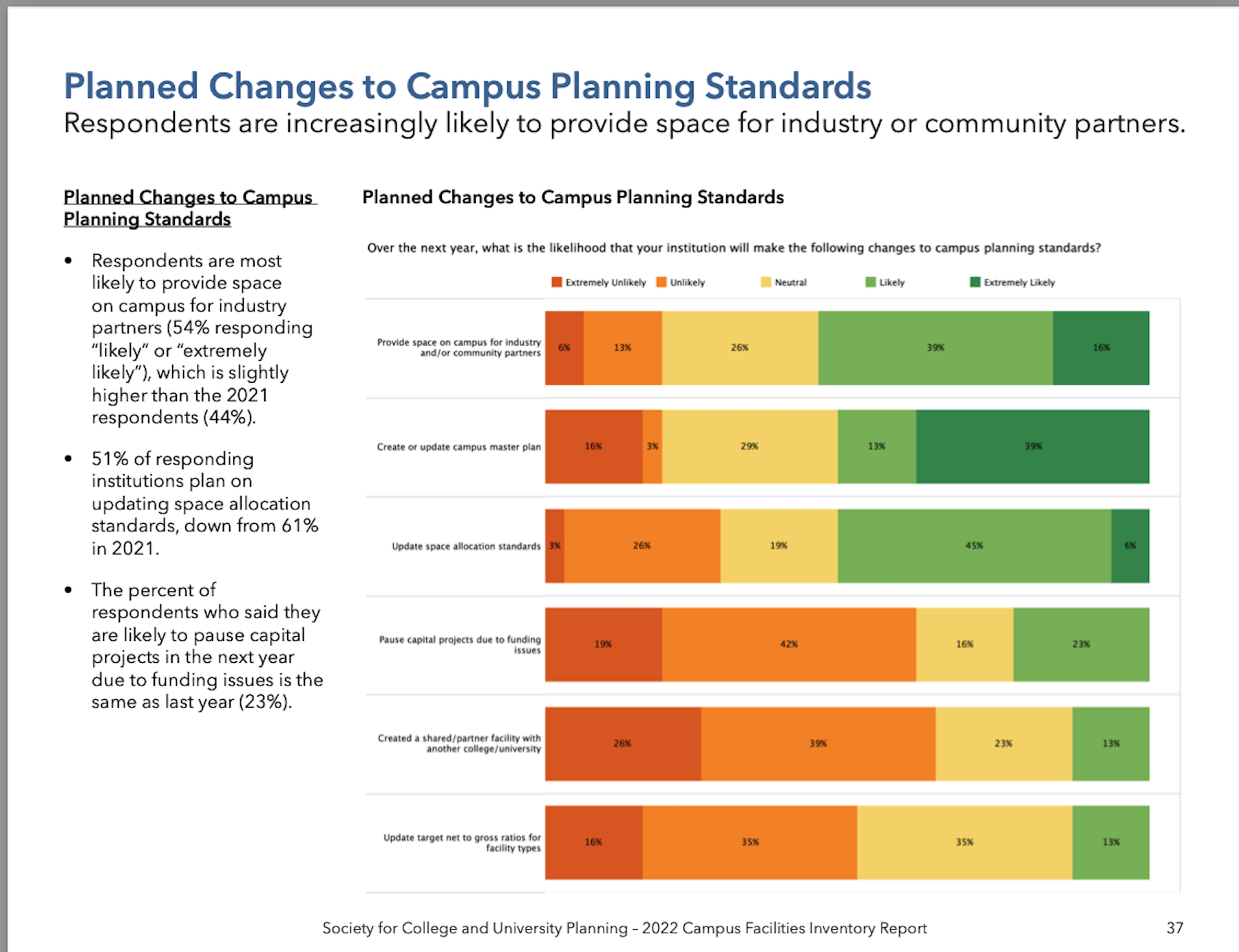
The 2022 Report includes questions about qualitative changes to space on campus—both changes that have been made recently or are likely to be made in the next three years. Thirty-one institutions participated in this part of the survey, the majority of which are four-year public schools. The survey found that respondents are more likely to update or adapt existing facilities, rather than build new ones; are more likely to make changes to administrative office facilities than academic offices; and expect 80 percent of faculty and staff to be working either fully on campus or on campus 3-4 days per week.
Based on responses, investments in campus computing infrastructure and technology systems within facilities are highly likely over the next year. More than half of the respondents said they plan to increase their computational research laboratory and fabrication/maker space facilities. And these respondents also intent to make greater use of outdoor spaces next year.
Interestingly, compared to 2021, more respondents reported decommissioning facilities over the past year. The most common space types for decommissioning were workspaces and research labs. That trend is expected to continue over the following three years.
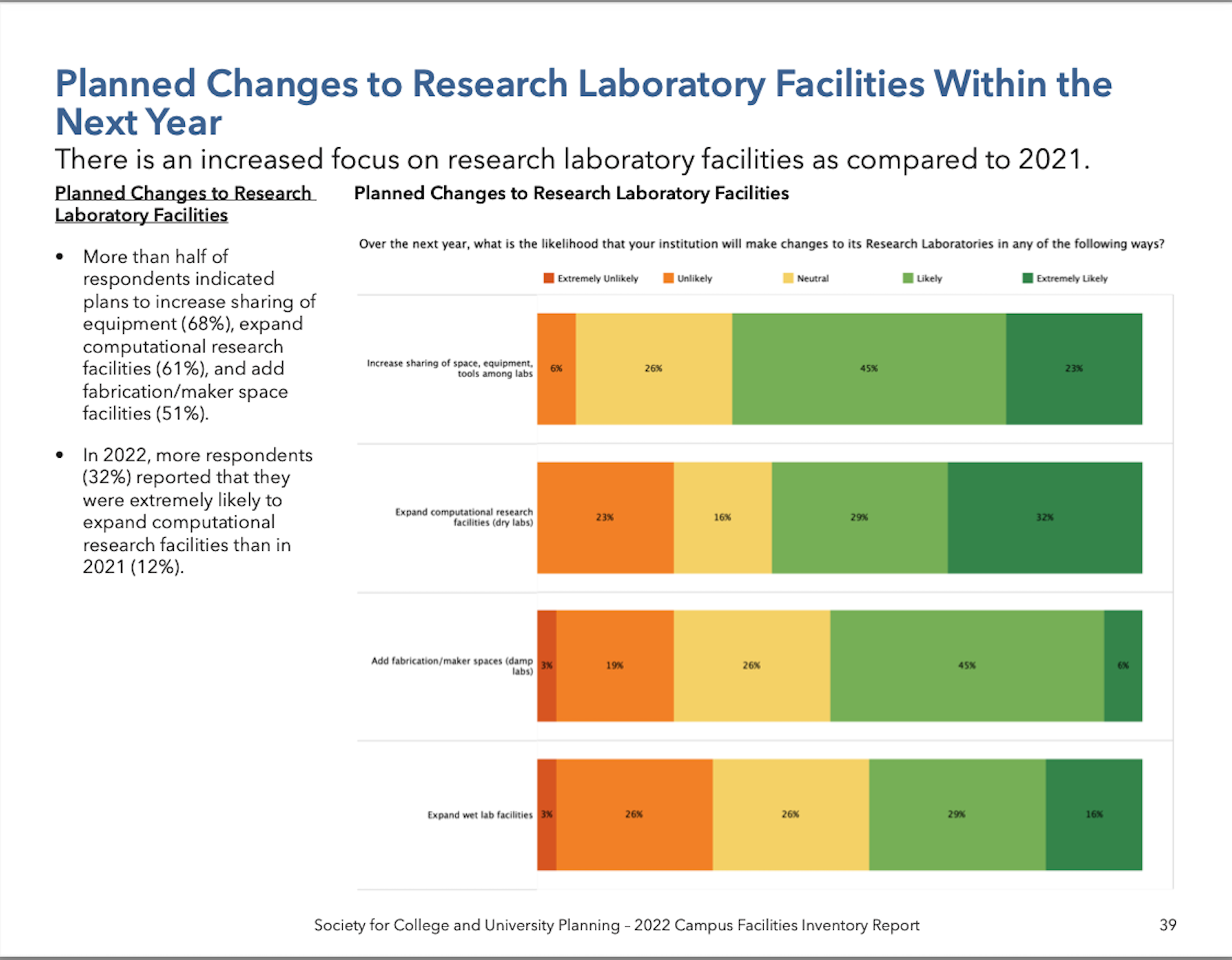
Athletic and recreation facilities moved up to the No. 2 facility type (from No. 7 in 2021) for planned facility updates, right behind classrooms. Adaptive reuse of existing facilities continues to top the list of planned changes to campus facilities, increasing to 84 percent of respondents, from 76 percent in 2021. And when it comes to library and study facilities, respondents are much less likely to move collections off-campus compared to 2021.
ADDING RESEARCH LABS A PRIORITY
Respondents are increasingly likely to provide space for industry or community partners. The 2022 respondents reported a greater focus on research labs, and on updating meeting room technology for virtual engagements.
College planners are also placing greater emphasis on expanding their institutions’ capacities for student health services. While centralizing health and wellness facilities on campus seems to be a nonstarter for many schools, more than two-fifths of respondents plan to design wellness into their student living facilities.
Sadie Wutka, SCUP’s Director of Content Strategy, tells BD+C that while the Society currently collects data yearly, that could change “as we determine the best cadence to provide accurate, timely data without overly burdening the institutions that submit it.
In response to BD+C’s emailed questions, Wutka and Allan Donnelly, brightspot strategy’s Associate Director, wrote that SCUP’s short-term priority is to increase the number of survey respondents “so we can develop a more robust data source.” SCUP is exploring new ways to aggregate data to make the information more useful to institutions, such as reporting out space use per region in the U.S.
Aside from the CFI Report, SCUP creates a range of learning opportunities, said Wukta, that includes publications and the Society’s annual conference.
VOLATILE ENVIRONMENT
Wutka said that the coronavirus pandemic accelerated changes that were already impacting higher education “and launched us into an even more intensely volatile, uncertain, complex, and ambiguous environment.” She pointed specifically to the “demographic cliff”—the decreasing numbers of adolescent students—that Northeastern and Midwestern institutions are now staring into. Other institutions are facing challenges related to state legislation and funding appropriations cuts.
“Higher education institutions need to anticipate the trends and movements that will impact them, and develop an integrated planning culture that builds relationships, aligns the institution, and prepares them to change and adapt,” said Wutka and Donnelly.
SCUP is currently into its 2018-2023 strategic plan that Wutka said has been “instrumental” in helping the Society and its members weather the pandemic. “We pivoted to remote conferences, reintroduced webinar programming, and developed an emerging leader program,” as well as SCUP Coaching, which helps institutions tackle planning challenges. Wukta said SCUP will initiate the process for its next five-year plan this coming fall.
Related Stories
ProConnect Events | Jan 16, 2023
6 more BD+C ProConnect Events in 2023 – The videos show why you should participate
ProConnects bring building product manufacturers and suppliers together with architects, contractors, builders, and developers to discuss upcoming projects and learn about new products and technical solutions.
Adaptive Reuse | Jan 12, 2023
Invest in existing buildings for your university
According to Nick Sillies of GBBN, students are increasingly asking: "How sustainable is your institution?" Reusing existing buildings may help answer that.
University Buildings | Dec 22, 2022
Loyola Marymount University completes a new home for its acclaimed School of Film and Television
California’s Loyola Marymount University (LMU) has completed two new buildings for arts and media education at its Westchester campus. Designed by Skidmore, Owings & Merrill (SOM), the Howard B. Fitzpatrick Pavilion is the new home of the undergraduate School of Film and Television, which is consistently ranked among the nation’s top 10 film schools. Also designed by SOM, the open-air Drollinger Family Stage is an outdoor lecture and performance space.
Adaptive Reuse | Dec 21, 2022
University of Pittsburgh reinvents century-old Model-T building as a life sciences research facility
After opening earlier this year, The Assembly recently achieved LEED Gold certification, aligning with the school’s and community’s larger sustainability efforts.
Esports Arenas | Dec 19, 2022
Ohio University’s OHIO Esports Arena redefines video gaming
If a college student enjoys film studies, there is probably a place on campus where they can join other film buffs. But where can students who like video games go?
Sponsored | Resiliency | Dec 14, 2022
Flood protection: What building owners need to know to protect their properties
This course from Walter P Moore examines numerous flood protection approaches and building owner needs before delving into the flood protection process. Determining the flood resilience of a property can provide a good understanding of risk associated costs.
Student Housing | Dec 7, 2022
9 exemplary student housing projects in 2022
Production continued apace this year and last, as colleges and universities, for-profit developers, and their AEC teams scrambled to get college residences open before the start of classes.
University Buildings | Dec 5, 2022
Florida Polytechnic University unveils its Applied Research Center, furthering its mission to provide STEM education
In Lakeland, Fla., located between Orlando and Tampa, Florida Polytechnic University unveiled its new Applied Research Center (ARC). Designed by HOK and built by Skanska, the 90,000-sf academic building houses research and teaching laboratories, student design spaces, conference rooms, and faculty offices—furthering the school’s science, technology, engineering, and mathematics (STEM) mission.
Education Facilities | Nov 30, 2022
10 ways to achieve therapeutic learning environments
Today’s school should be much more than a place to learn—it should be a nurturing setting that celebrates achievements and responds to the challenges of many different users.
Data Centers | Nov 28, 2022
Data centers are a hot market—don't waste the heat!
SmithGroup's Brian Rener shares a few ways to integrate data centers in mixed-use sites, utilizing waste heat to optimize the energy demands of the buildings.


